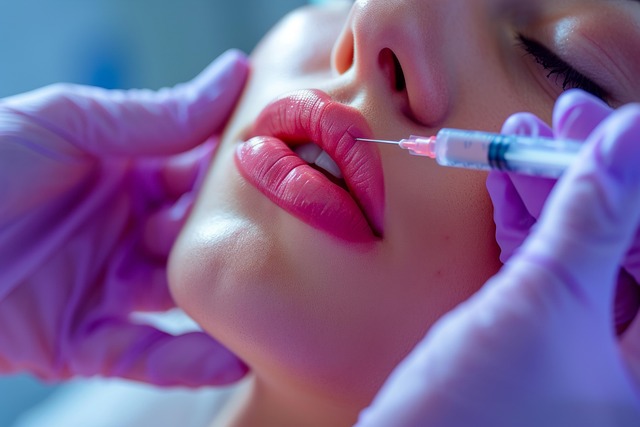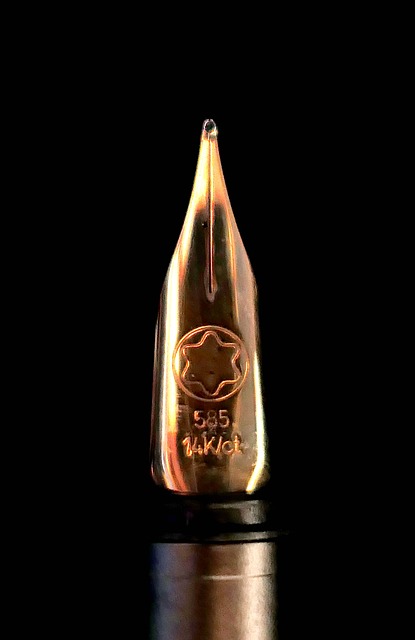Botox and dermal fillers are popular non-invasive treatments for fine lines and wrinkles, each with distinct mechanisms: Botox temporarily paralyses facial muscles to prevent dynamic wrinkles (caused by expressions), while dermal fillers add volume and smooth static wrinkles by injecting substances like hyaluronic acid or collagen. Botox is ideal for subtle corrections and preventative measures, targeting specific muscle groups, whereas dermal fillers are indicated for deeper wrinkles or significant volume restoration. Both offer minimal downtime and substantial improvements, with Botox lasting 3-6 months and dermal fillers up to two years. Proper maintenance and skincare routines maximize results and longevity of each treatment.
Understanding Fine Lines and Their Causes

Fine lines, often the first visible signs of aging, are a natural part of the skin’s maturation process. They form due to various factors, primarily related to muscle movement and environmental influences. Over time, the skin’s elasticity decreases, leading to wrinkles and fine lines, especially around the eyes, forehead, and mouth.
When considering prevention strategies, many individuals turn to cosmetic treatments like Botox and dermal fillers. Botox, a protein derived from bacteria, temporarily paralyzes muscles, reducing dynamic wrinkling caused by facial expressions. On the other hand, dermal fillers enhance the skin’s texture by injecting hyaluronic acid or collagen into deep skin layers, providing instant volume and smoothing effects. In the debate between Botox vs. Dermal Fillers for fine line prevention, each has its advantages; Botox offers a more targeted approach to specific muscle groups, while dermal fillers provide broader, immediate results.
The Role of Botox in Preventing Fine Lines

Botox has established itself as a prominent player in the skincare game, particularly for those seeking to prevent and reduce fine lines and wrinkles. Unlike dermal fillers that plump and fill in deep creases, Botox works by temporarily paralyzing the muscles responsible for creating these lines. This non-invasive approach makes it a popular choice for individuals wanting to maintain youthful-looking skin without significant alterations.
When injected into specific areas of the face, Botox can prevent dynamic wrinkles from forming. Dynamic wrinkles are caused by repeated muscle contractions, such as when you smile or frown. By relaxing these muscles, Botox stops the wrinkle-causing movements, thereby reducing the appearance of fine lines over time. This is especially beneficial for areas like the forehead, crow’s feet around the eyes, and expression lines between the eyebrows. In contrast to dermal fillers, which provide immediate results but may require repeated injections, Botox offers a more gradual, natural-looking improvement, making it ideal for proactive skincare.
How Does Botox Work for Skin Rejuvenation?

Botox, a popular neurotoxin, has become a go-to option for those seeking to combat signs of aging gracefully. Its mechanism of action involves blocking specific nerve signals that cause muscle contractions, which over time can lead to dynamic wrinkle formation, especially around the eyes and forehead. By preventing these contractions, Botox allows the skin to relax, smoothing out fine lines and wrinkles, and creating a more youthful appearance.
When compared to dermal fillers, which add volume to the skin by injecting substances like hyaluronic acid, Botox offers a unique approach to skin rejuvenation. While fillers provide instant results by plumping up wrinkled areas, Botox focuses on preventing future wrinkle formation. This makes it an ideal choice for individuals who want to maintain a youthful look over the long term.
Botox vs Dermal Fillers: Key Differences

When considering treatments for fine line prevention, understanding the differences between Botox and dermal fillers is essential. These two popular cosmetic procedures target different aspects of skin aging. Botox, a neurotoxin, primarily works by relaxing muscle activity, reducing dynamic wrinkle formation. It’s particularly effective for preventing expression lines on the forehead, around the eyes, and on the neck. On the other hand, dermal fillers enhance volume loss associated with aging, smoothing out fine lines and wrinkles from within the skin. They are ideal for addressing static wrinkles, deep facial creases, and enhancing facial contours.
The key distinction lies in their mechanism of action. Botox acts as a muscle relaxant, while dermal fillers add volume. This means that Botox is best for preventing new wrinkles from forming through muscle movement, whereas dermal fillers provide an immediate result by plumping up areas that have lost volume over time. Both treatments offer effective fine line prevention strategies, catering to different needs and preferences, so individuals can choose the most suitable approach for their specific concerns.
Choosing the Right Treatment Option for You

When considering Botox or dermal fillers for fine line prevention, it’s crucial to understand the nuances of each treatment and choose what aligns best with your needs. Both options have their strengths in smoothing out facial lines and wrinkles, but they work differently. Botox paralyzes muscles to prevent contractions that cause lines, while dermal fillers add volume by plumping up depressed areas with hyaluronic acid or other substances.
The choice between Botox and dermal fillers depends on factors like the severity of your fine lines, desired results, and individual preferences. For subtle corrections and preventative measures, Botox might be a better fit due to its ability to target specific muscles. Dermal fillers, on the other hand, are ideal for deeper wrinkles or areas that need significant volume restoration. Consulting with a qualified dermatologist can help you make an informed decision based on your unique skin concerns.
Potential Benefits and Risks of Botox Injections

Botox injections offer a popular non-surgical approach to fine line prevention and wrinkle reduction, providing several potential benefits. One of its key advantages is its ability to relax facial muscles, thereby preventing dynamic wrinkles from forming. This can be particularly effective for crow’s feet, frown lines, and forehead wrinkles caused by frequent expression. By addressing these areas, Botox can help individuals achieve a more youthful appearance and enhance their overall confidence.
However, like any cosmetic procedure, there are risks associated with Botox injections. Potential side effects include temporary bruising, swelling, or discomfort at the injection site. In rare cases, patients may experience more severe reactions or asymmetrical results. When considering Botox vs. dermal fillers, it’s essential to weigh these risks and benefits. Compared to dermal fillers, which add volume and can be used for a broader range of concerns, Botox focuses on muscle relaxation, making it ideal for specific dynamic wrinkles.
Non-Invasive Procedures for Youthful Skin

In the quest for youthful skin, non-invasive procedures have gained immense popularity as they offer a subtle and natural approach to reversing signs of aging. One of the most well-known and effective methods is Botox, a protein derived from bacteria that temporarily paralyzes muscles, reducing the appearance of fine lines and wrinkles. When it comes to preventing and treating early signs of aging, Botox has long been the go-to option for many. It provides a targeted treatment, relaxing facial muscles that contribute to dynamic wrinkle formation.
While Botox is a powerful tool, dermal fillers present an alternative approach. These injectables contain substances like hyaluronic acid, collagen, or calcium hydroxyapatite, which enhance skin volume and elasticity. Unlike Botox, dermal fillers add substance to the skin, lifting and plumping areas that have lost volume over time. The choice between Botox and dermal fillers often depends on individual preferences and specific concerns. Both procedures offer minimal downtime and significant improvements in skin appearance, making them appealing choices for those seeking a more youthful look without extensive surgery.
Maintenance and Follow-up Care After Botox Treatment

After undergoing Botox treatment for fine line prevention, proper maintenance and follow-up care are essential to maximize results and ensure longevity. Unlike dermal fillers, which can last up to two years, Botox effects typically last between 3 to 6 months. During this period, it’s crucial to maintain a consistent skincare routine focused on hydration and sun protection. Using moisturizers and sunscreens daily helps protect the treated area from environmental stressors that could impact the results.
Regular follow-up appointments with a qualified dermatologist or aesthetic specialist are also important. These visits allow for early detection of any potential side effects and ensure the treatment remains effective. During these check-ins, professionals can assess if additional treatments are needed to maintain the desired level of smoothness in the skin, offering a more tailored approach compared to Botox’s general duration, unlike dermal fillers which provide longer-lasting results.
